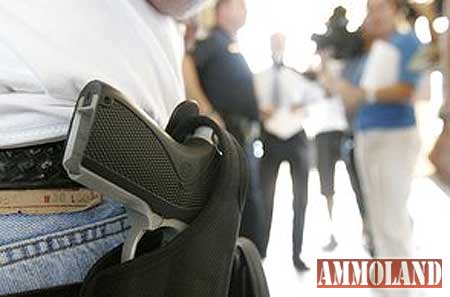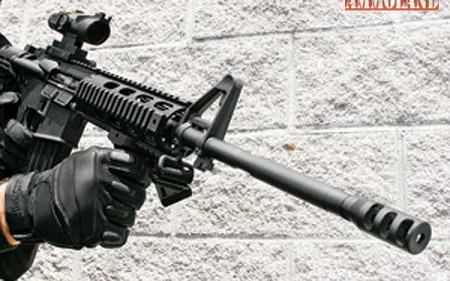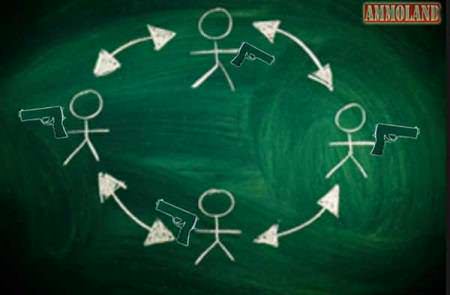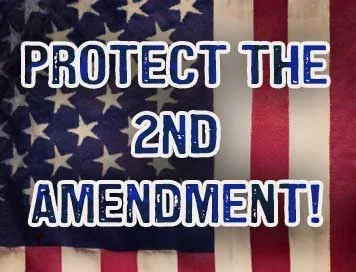Rebuttal To BSU President Bob Kustra’s Printed Remarks Re: Senate Bill 1254
Prepared by Idaho Sport Shooters Alliance & Students for Concealed Carry www.IdahoSSA.org www.ConcealedCampus.org


Unfortunately, President Kustra’s remarks on Senate Bill 1254 are misguided and contain inaccurate information. To begin with, President Kustra claims that the bill would “remove” the ability of public colleges and universities in Idaho to prohibit weapons on their respective campuses, asserting that such authority is “currently held.”
The argument that Idaho’s public colleges and universities have existing authority to regulate firearms is not supported by statute, case law, or the Idaho Constitution.
If such authority existed, the public colleges and universities would have a source to refer to, yet none exists. Article I, Section 11 of the Idaho Constitution guarantees to citizens the right to keep and bear arms while allowing the Legislature to regulate “the carrying of weapons concealed on the person” among other aspects of the right such as mandatory minimum sentences for crimes committed with firearms.
This constitutional provision operates to bind all three branches of state government and makes no exception for colleges and universities. Because Article I, Section 11 only delegates regulatory authority to the Legislature, it follows that any authority to regulate firearms on the part of public colleges or universities as political subdivisions of the state would have to flow from the Legislature.
Until the proposed delegation of limited regulatory authority under Senate Bill 1254, the Idaho Legislature has not granted any authority to public colleges and universities to regulate firearms.
It should be noted that the otherwise lawful possession of firearms on public college and university campuses in Idaho is not a violation of any state statute, as the Legislature has chosen to generally prohibit firearms in K-12 schools but not on the campuses of postsecondary institutions.
Open Carry
[As a nationwide organization, Students for Concealed Carry (SCC) takes no position on open carry.]
Ignoring the existing legal reality that the possession of firearms on public post-secondary campuses in Idaho, whether concealed or carried openly, is not prohibited by law, President Kustra’s remarks paint the false picture that Senate Bill 1254 would make open carry on campus legal. By virtue of open carry on campus already being lawful, Senate Bill 1254 does not make legal what is presently illegal. Rather, Senate Bill 1254 would allow public postsecondary institutions to regulate the possession of firearms by unlicensed persons or even those who only have a standard Idaho Concealed Weapons License. Senate Bill 1254 grants these institutions authority to do something they presently lack the authority to do. Also noteworthy is the fact that Article I, Section 11 of our Idaho Constitution does not delegate any authority to the Legislature to regulate openly carried firearms. Simply put, the Legislature may not grant what it does not have, and it will be the duty of the courts to interpret the interface between open carry and Article I, Section 11 should a case properly come before them.
President Kustra goes on to state concerns about potential impact to entertainment and athletic events on campus, suggesting that the passage of Senate Bill 1254 will present an obstacle to hosting such events. This ignores not only the fact that the possession of firearms in these facilities is already lawful, but also ignores that the concept of licensed, trained adults being allowed to carry on campus has already been tested in states such as Utah and Colorado.
If such concerns were well-grounded, there would be ample evidence in these other states to point to, yet all we see here is speculation.
President Kustra decries the signage requirement of Senate Bill 1254 by asking, “[W]hat kind of message does this send about Boise, about Idaho and about our priorities?” If the public postsecondary institutions that have policies purporting to regulate or prohibit firearms are to be taken seriously, why do they keep these policies tucked away from public view in policy manuals and handbooks, rather than providing notice to the public? How can the existing policies even begin to have any effect at all unless people are aware of them? What message does the lack of current signage for these policies send, and what message is sent by complaining about being required to provide notice?
Lastly, the assertion is made that open carry on campus is illegal in states such as Utah and Colorado without citation to statutes or administrative rules. Provided that one has a license to carry, open carry on campus is lawful in Utah and is presumptively lawful in Colorado as well. See Utah Code § 76-10-505.5, C.R.S. § 18-12- 105.5.
Constitutional Rights
President Kustra cites dictum from District of Columbia v. Heller, 554 U.S. 570 (2008) regarding sensitive places for the proposition that current college and university policies purporting to ban firearms are constitutional. While the U.S. Supreme Court noted that its holding was not to be read as declaring prohibitions on the possession of firearms in “schools and government buildings” as unconstitutional, the Court did not hold that restrictions in these areas were constitutional – it merely left those questions unanswered. The holding of McDonald v. Chicago, 561 U.S. 3025 (2010) is misstated by President Kustra when he claims, “In the McDonald case, Justice Alito added that the laws prohibiting weapons in schools and government building are valid…” Contrastingly, the Court simply reaffirmed what it stated in Heller, namely that it was not addressing the constitutionality of restrictions on firearm in schools and government buildings and that its decision was not to be read to invalidate such restrictions. Put differently, the Court in McDonald did not hold that such prohibitions are valid. Instead, the Court stated that its opinion did not invalidate such prohibitions. Further, in regulating the possession of firearms on school property in Idaho, the Legislature has defined “school” as “a private or public elementary or secondary school” and has not included postsecondary institutions, although it could have done so. See Idaho Code § 3302D(2)(e).
Also noteworthy is the fact that President Kustra does not discuss the role of the Idaho Constitution and the impact it has. As a matter of long-settled law, state constitutions may provide greater protections for citizens than those provided by the U.S. Constitution. Construing the prior, less expansive version of Article I, Section 11, the Idaho Supreme Court held that, “Under these constitutional provisions, the legislature has no power to prohibit a citizen from bearing arms in any portion of the state of Idaho, whether within or without the corporate limits of cities, towns, and villages.” In re Brickey, 8 Idaho 597 (1902). The Court in Brickey continued, “The legislature may, as expressly provided in our state constitution, regulate the exercise of this right, but may not prohibit it.” Id.
The ‘Unfunded Mandate’ Argument
Doomsday claims are made regarding the costs associated with compliance should Senate Bill 1254 become law, yet these claims are unfounded and show the lack of any commitment by these institutions to provide actual security. President Kustra claims, “[I]t is a certainty that it will lead to major expenditures in the arming and training of security forces; in the likelihood of needing metal detectors at residence hall entrances and entrances of other venues on campus where this law would prohibit concealed weapons.” Senate Bill 1254 does not require any “arming and training of security forces” whatsoever, nor does the bill require the installation or operation of magnetometers or other screening methods. Why are these sorts of screening methods not in use already?
It is the height of disingenuousness to have an existing policy not taken seriously, only to turn around and bemoan the optional implementation of actual detection and legitimate enforcement. All that Senate Bill 1254 requires of these institutions is the posting of signage each point of public ingress at a public entertainment facility. Such signage is merely a condition for an institution to be able to regulate concealed carry in the particular facility. An institution could choose to allow concealed carry in a public entertainment facility if it wished to do so by simply not posting signs. Further, there is no requirement concerning the material from which signs are to be made or the quality of signs so long as the signage is proper and conspicuously posted. Certainly a public college or university could simply use a sign printed on paper and taped to the inside of a glass door or a laminated paper sign – a cost which would be de minimis as the fiscal note of the bill indicates.
President Kustra goes on to suggest that Senate Bill 1254 “likely would require such costly inspection measures” despite the lack of any such language in the bill, and argues further that public postsecondary institutions would be subject to legal liability for failure to perform something not even required by the bill. Once again, this is nothing more than a conclusory argument without a basis in law or fact.
The ‘Local Control’ Argument
Yet again, the false premise that existing authority is being removed by Senate Bill 1254 rears its head. While local control is a good and proper model as a general matter, when ‘local control’ means disregarding state law and the protections of Article I, Section 11, the involvement of the Legislature is warranted. This was exactly the same rationale behind the Legislature preempting the field of firearm regulation in Idaho, namely to safeguard constitutionally-protected individual liberties and provide uniformity throughout the state.
The Presence of Children on Campus
The remarks of President Kustra belabor the fact that children may be present on a public postsecondary campus as if to argue that the state prohibition on the possession of firearms in K-12 schools should apply by extension. Senate Bill 1254 does not in any way suspend the K-12 prohibition under state law should a K-12 school exist on a public postsecondary campus, nor would the bill suspend regulations on the possession of firearms in school-provided transportation. See Idaho Code § 18-3302D. The extension of President Kustra’s argument would yield an absolutely absurd result given that children are present in nearly every place open to the public except places where admittance is restricted by law to those of at least 18 or 21 years of age. For example, children are present at city parks, on federal recreational land, in shopping malls, in grocery stores, and at other public gathering places where firearms are already lawfully carried by adults.
Opposition by Law Enforcement
Without noting the contractual relationship between the Boise Police Department and Boise State University, President Kustra argues that, “[T]he police force that provides our campus security is opposed to this bill.” Such a statement is misleading, given that the 1,500 member Fraternal Order of Police (FOP) is in support of the bill and given that FOP represents working class officers rather than top department brass such as chiefs. The more accurate statement would have been that the chief of the Boise Police Department is opposed to the bill and thereby the department as an entity of city government. To suggest that there is widespread opposition from law enforcement personnel is simply misleading.
Lastly, President Kustra conveys the views of Boise Police Department Chief Mike Masterson in suggesting a wide disparity between the training undergone by those issued enhanced concealed weapons licenses and on-duty officers. Active law enforcement personnel are placed in a role where they have a responsibility for protecting far more than their own personal safety. Among a wide array of training to meet many duties, officers are trained to seek out and engage assailants when appropriate, whereas citizens are trained simply to respond to an imminent threat of serious bodily injury or death to them or someone in their immediate proximity. It follows naturally that due to the vastly different roles, the training received by law enforcement personnel will be different in terms of content and duration from that received by citizens obtaining an enhanced concealed weapons license or a retired law enforcement license – the only two types of licenses that would be recognized on campus under the bill.
President Kustra argues that law enforcement responding to a violent crime where a citizen uses a firearm in self-defense will be unable to discern between the victim and the perpetrator. This fails to take into account that such encounters are typically very brief in duration and end before law enforcement has a chance to respond. Also ignored is the fact that throughout the vast majority of the United States, citizens already carry concealed firearms for personal protection and the fact that law enforcement is trained to be aware of the presence of armed citizens and respond accordingly. The doom-and-gloom argument that responding law enforcement will be unable to discern good and bad is not supported by evidence from off-campus locations where firearms are allowed, nor by evidence from campus locations in states that allow concealed carry on campus, such as Utah and Colorado.
About:
The Idaho Sport Shooters Alliance is the only statewide group dedicated solely to advocating for the interests of gun owners and recreational shooters in Idaho. Visit: www.idahossa.org






